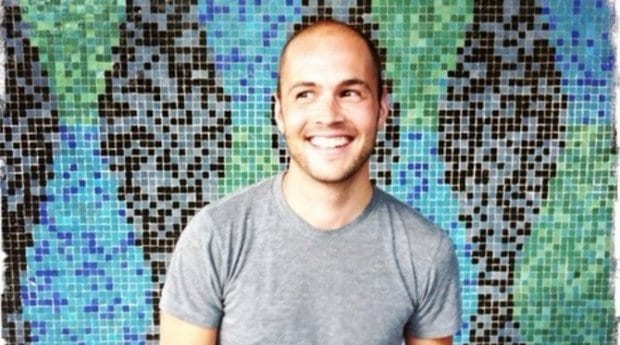A surge of government-funded studies into HIV and the health of gay and bisexual men marks a new recognition among public health officials of the community’s needs, say some researchers.
“Gay and bisexual men have been largely neglected as a population within the HIV epidemic in the early 2000s,” says Olivier Ferlatte, a researcher with the Community-Based Research Centre in Vancouver.
“I think now gay and bisexual men are increasingly being recognized by public health,” he says, “and that’s why we are seeing the surge of research that we should have seen much sooner.”
“Gay men have been representing half of the new HIV infections for over a decade,” he notes, “but it’s just now that we are seeing an interest in us.”
Ferlatte and his colleagues, with support from Vancouver’s Health Initiative for Men (HIM), are working on the 2015 edition of the Sex Now survey, which was first launched in Vancouver in 2002. The survey, now national, is particularly interested this year in different perspectives among generations of men who have sex with men.
Like the Sex Now researchers, Nathan Lachowsky, the project director for Vancouver’s Momentum Health Study on HIV infection rates among gay and bisexual men, says his research goes beyond HIV to study gay men’s health more broadly.
“HIV continues to disproportionately affect gay men. We are working to improve prevention programs and services for all gay men,” he says. “However, our research also focuses on health issues beyond HIV, including sexual health and STIs, substance use and mental health. These are issues that directly or indirectly affect all gay men.”
For Lachowsky, the surge in research projects pertaining to gay men’s health and HIV rates reflects the need to understand why some gay men are more susceptible to acquiring HIV than others.
Sex Now and the Momentum Health Study are just two of approximately 16 research projects currently underway in partnership with HIM.
Jody Jollimore, the program manager at HIM, says the increase in research is a necessary tool to help understand the disparity between HIV infection rates among gay and bisexual men and other communities in BC.
“The [research] surge is related to the number of new HIV infections among gay men. That’s what’s driving the research,” he explains. “As HIV becomes less of a problem in other communities, researchers want to know why the same outcomes aren’t occurring for gay men.”
According to a 2012 report from the Ministry of Health, gay and bisexual men accounted for nearly two-thirds of all new HIV cases but only 10 percent of health research grants.
Funding for the Momentum study comes from the Canadian Institutes of Health Research as well as the US National Institutes of Health. In-kind support has also been provided by community partners such as HIM, the BC Centre for Excellence in HIV/AIDS and several local universities. HIM has already helped recruit more than 700 gay and bisexual men for the study, Jollimore says.
Researcher Trevor Hart attributes the increase in HIV research to a greater collaboration between leaders in the gay community and gay researchers.
“There are many researchers in the field that are willing to be out about their research and sexual orientation,” he says. “There’s also a much greater interest and push among community leaders and researchers to work together to provide meaningful research for the community.”
Last November, Hart’s research team at Ryerson was awarded $1.5 million from the Canadian Institutes of Health Research to study HIV prevention strategies among gay and bisexual men. Hart says researchers are now placing more importance on understanding the social determinants in relation to the risk factors of acquiring HIV.
“We used to tell people that HIV is preventable and then inform them of not having vaginal or anal sex without a condom, which was useful, but not efficient for today,” he says.
Hart says healthcare providers today must do more than hand out condoms. “There needs to be more of a focus on the mental health determinants,” he says. “We hope to create and test new programs that provide both biomedical and psychosocial treatment options.”
Hart hopes the increase in research pertaining to gay men’s health is just the beginning. “We’re glad to have the research but it’s just a start. We’d like to see all parts of the LGBTQ rainbow represented in research projects,” he says.
Other gay-related research projects currently underway include the Community Health & HIV Assessment of Men Who Purchase and Sell Sex (CHAPS), which is studying male sex workers and clients in Vancouver, and the Gay Poz Sex study in collaboration with the AIDS Committee of Toronto and Positive Living BC.
To participate in the Sex Now Survey click here before mid-April. Results of this year’s survey will be available this fall.

 Why you can trust Xtra
Why you can trust Xtra


